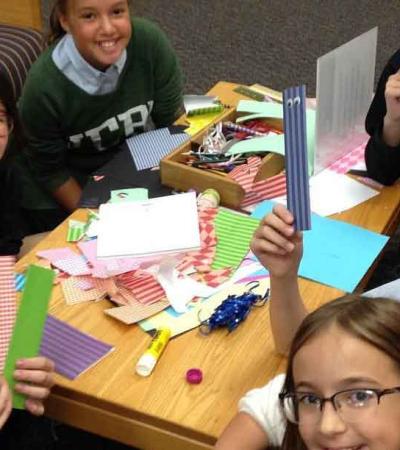Ever wonder how other librarians come up with such creative program ideas? So do we! It’s not easy to keep library programming fresh, but these tips can help you find inspiration.
Do you have other favorite spots where you look for ideas? Share them in the comments.

1. Publisher catalogs
Keeping up on trends can be key to planning an engaging program calendar. Janie Hermann, adult programming manager at Princeton (N.J.) Public Library, suggests looking through publisher catalogs such as NetGalley and Edelweiss to get a feel for what’s trending.
“I noticed a few years ago that numerous books about hygge were set to come out in late 2016 and early 2017. I only had a slight inkling of what this concept was, so I started researching it, and I soon realized that hygge was the perfect theme for our winter program quarter,” she says.
2. Event calendars
If you’re looking to fill a gap in your programming, take advantage of the many, many holidays, events and annual celebrations that surround us. You’ll find everything from library-centric events to celebrations of doughnuts and American cheese. Find ideas on Programming Librarian’s Events and Celebrations page or Chase’s Calendar of Events.
3. Social media
Imitation is the sincerest form of flattery, right? Find some libraries whose programming you admire and follow them on Twitter and Instagram to stay abreast of their offerings. Also, search hashtags for a broader look at what libraries are doing. Some of our favorite Twitter hashtags include #programminglibrarian, #makerspace, #libraryprogram, #lifelonglearning, #grownuplibrary, #grownupprogramming and #libraryevents; some Instagram favorites are #programminglibrarian, #librariesofinstagram, #lifelonglearning, #grownuplibrary, #grownupprogramming and #librarylife.
4. Local nonprofits, government agencies, arts centers, schools, businesses … and so on
Are you still going it alone when it comes to programming? If so, you’re making your job more difficult — and probably not being as effective as you could be.
“Collaboration is so key to what we do here in Darien,” says Mallory Arents, associate director of programs and services at Darien (Conn.) Library. “We often work with neighboring organizations to elevate hyper-local initiatives. For example, while the Darien Community Fund has been working through a town-wide campaign to address binge drinking among youth, we’ve hosted events in collaboration with them including book discussions, film screenings and panel discussions.”
Arents says she also works with local agencies to identify and fill gaps in service. For example, while the local senior center offered support groups and counseling for caregivers for older adults, it didn’t offer stress-reduction programs. Now the library partners with the senior center to offer chair massages, meditation and events for caregivers so they can recharge.
5. Your patrons and coworkers
If you don’t know what programs to offer, you might not know enough yet. Ask yourself if you really know what your community wants and needs.
Rebecca Campbell is the adult services manager at the Eustis (Fla.) Memorial Library. During her time as the programming librarian for Boston (Mass.) Public Library, she was tasked with developing a program series that could be implemented across her library system’s neighborhood branches. She knew she needed more information before she could get started. “I started off by asking the branch librarians what their community needs and interests were, and then I researched organizations that could meet those needs,” Campbell says. As a result, she created a suite of program offerings on topics like ballet, yoga, financial literacy and container gardening, all led by local experts. She then developed an “adult and youth program menu” that would allow branches to select the programs they wanted to offer their communities.
Scheduling regular meetings with local nonprofits can help both sides stay up-to-date on plans, Hermann says. “If the local theater is doing a production of ‘Hounds of the Baskerville,’ then it is a great time for us to do a Sherlock Holmes program. If the senior center is doing a focus on ageism, we work together to enhance their programs,” she says.
6. The Programming Librarian Interest Group
ALA's Programming Librarian Interest Group (PLIG) gives library workers a place to share program ideas and successful strategies. If you're an ALA member (and you should be!) you can be an official PLIG member and attend one of the group's fabulous conference gatherings. But the PLIG Facebook group is open to everyone — and with 12,000 members, it's a great place to ask questions or search for ideas. (The Facebook group is private, so request permission to join; requests are generally granted quickly.)



